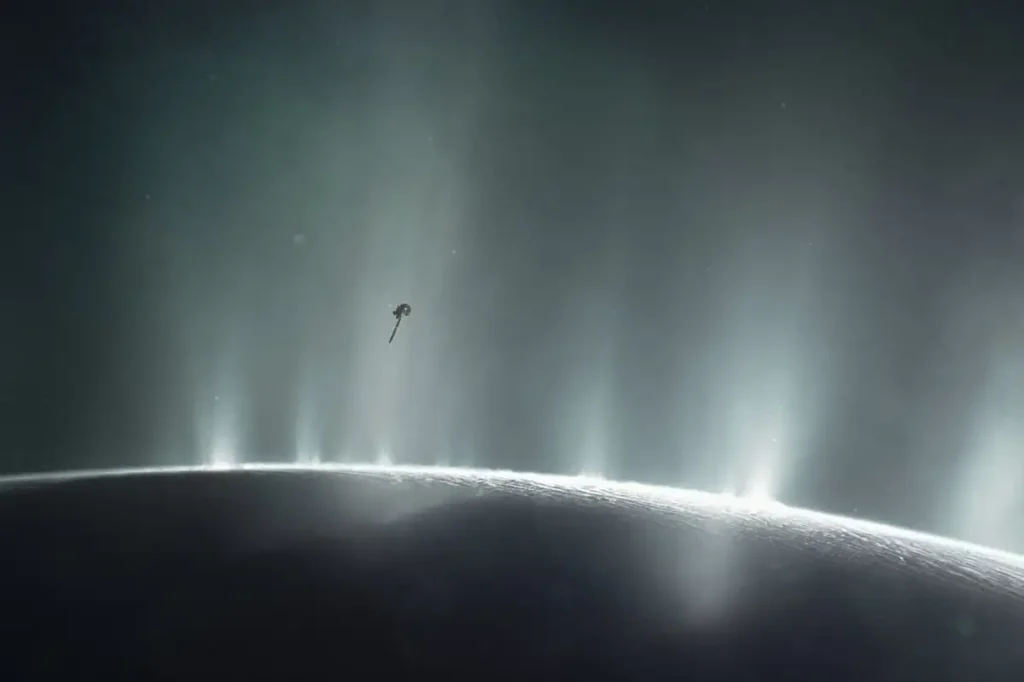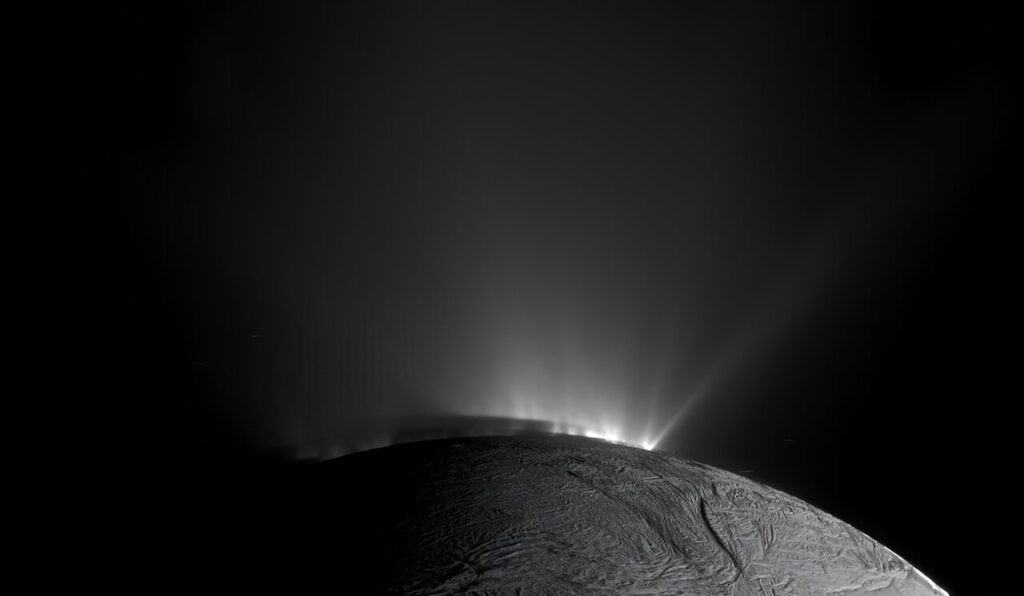In a groundbreaking study utilizing data from NASA’s Cassini mission, scientists have made a significant discovery at Saturn’s icy moon Enceladus, finding evidence of a key ingredient for life and a potent source of energy to fuel it.

This research, led by University of Florida astronomer Adam Ginsburg, offers new insights into the potential habitability of Enceladus and the complex chemistry occurring beneath its icy surface.
Enceladus has long captivated scientists with its giant plume of ice grains and water vapor, known to contain organic compounds crucial for life. The recent analysis of Cassini data has taken this a step further by confirming the presence of hydrogen cyanide (HCN), a molecule integral to the origin of life. This discovery is complemented by evidence of a powerful chemical energy source in the form of various organic compounds, some of which serve as fuel for organisms on Earth.

Published in Nature Astronomy, the findings suggest that Enceladus harbors much more chemical energy than previously thought, increasing the likelihood that life could thrive and be sustained in its subsurface ocean. Jonah Peter, a doctoral student at Harvard University and lead author of the study, emphasizes the significance of Enceladus in understanding the building blocks of life and the metabolic reactions that sustain it. The study reveals the potential for complex biomolecule formation on Enceladus and the chemical pathways that might be involved.
The discovery of hydrogen cyanide is particularly noteworthy. HCN is considered the starting point for most theories on the origin of life, serving as a versatile precursor for amino acids. Its ability to form various structures makes it a critical component in the synthesis of life’s building blocks. The robust evidence for HCN in Enceladus’s plume strengthens the case for this moon as a prime candidate in the search for extraterrestrial life.
In 2017, scientists found evidence at Enceladus of chemistry that could support life, if present, in its ocean. The combination of carbon dioxide, methane, and hydrogen in the plume hinted at methanogenesis, a process that produces methane and is widespread on Earth. The new study builds on this by uncovering additional energy sources, far more potent and diverse than methane production alone. These findings indicate the presence of many chemical pathways that could sustain life in Enceladus’s ocean.
Unlike previous research that relied on lab experiments and geochemical modeling, the new study employed detailed statistical analyses of data collected by Cassini’s ion and neutral mass spectrometer. This approach allowed the researchers to discern subtle differences in how well different chemical compounds explain the Cassini signal, leading to a more accurate understanding of the moon’s chemistry.
The implications of this research extend beyond Enceladus. The molecules present in our Solar System today were likely once ice on small dust grains that combined to form planets and comets. Understanding the nature of interstellar ice at Enceladus could provide clues about the origins of the molecules that shape our cosmic environment.
As scientists continue to analyze the wealth of data from Cassini, Enceladus remains a focal point in the quest to understand life’s origins. The study by Ginsburg and his team not only sheds light on the chemical complexity of this intriguing moon but also opens new avenues for exploring the potential for life beyond Earth.
Reference(s): Research Paper (pdf)
